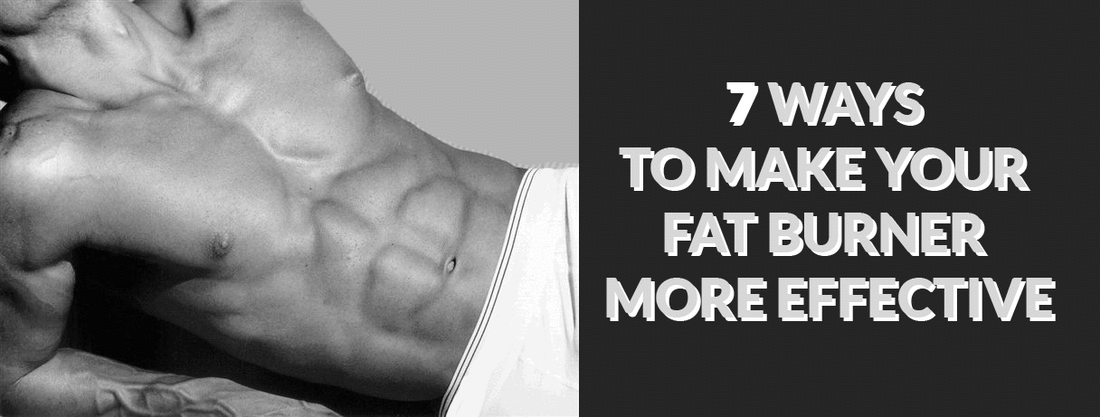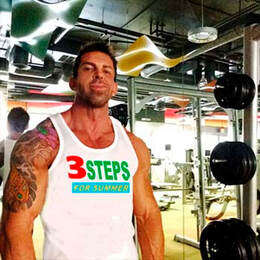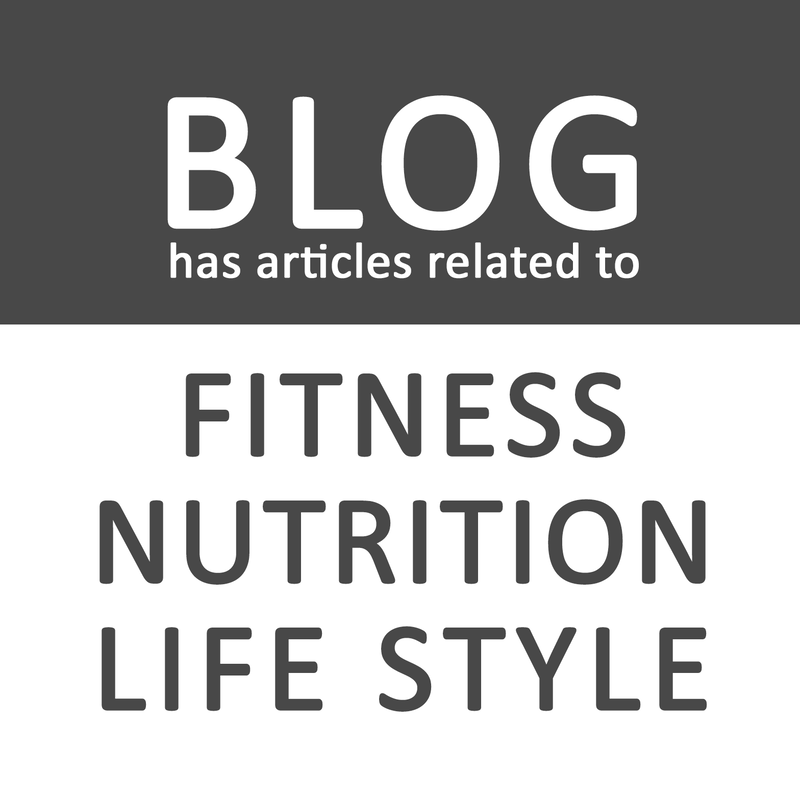|
Samba balances his energy with two daily walks.
He keeps fit and socialized by running and playing in the park three times a week. |
Lifestyle Find Yours.
Samba in front, followed by his friend Batucada. |
|
Today, I wanted to address a question that I often receive due to my fitness brand, GO6PACK Fitness.
Many of you have reached out and asked me about the timeline for developing six-pack abs. I wanted to take this opportunity to share my answer, which remains consistent and reflects the realistic approach I take in my training programs.
0 Comments
As we welcome the new year, join us in exploring the impact of harmful foods on your body. Discover the top three culprits that could be damaging your health and well-being. From insightful information about the Mediterranean diet's benefits to the pitfalls of harmful diets like Whole30, Atkins, and Ketogenic, this article has everything you need to start the year strong. Read on to make informed choices for a healthier you!
Almost every one of us has been raised with the idea that you should wash and clean every food that you bring into your kitchen. However, there are actually some foods that do not need to be washed, and washing certain foods might expose you and your loved ones to serious health conditions.
Discover the Surprising Link Between Bananas and Weight Loss. As soon as we hear the phrase “weight loss” the first thing that comes to our mind is hunger, restrictive diets, and excessive workout. However, most of the time, the person ends up breaking the diet and giving up on the whole diet program. There are some foods that are very rich in nutrients, which will provide you with the necessary daily intake of vitamins and significantly reduce your appetite, preventing you from feeling hungry. One of these foods is banana.
Prepare to Rethink Apples: Startling Discoveries Exposed.
Most people believe that apples are healthy, but guess what? It’s not exactly true. Actually, apples involve several risks that may urge you to make a trip to the doctor. Besides, a portion of this fruit may be deadly. Let alone the pesticide residue and allergens that could seriously harm your health. Here are the downsides of apples, and a few ways to lower the risks: December abounds with holiday celebrations, but nothing can spoil good cheer like an emergency trip to the veterinary clinic. These tips can help keep your winter holiday season from becoming not-so-happy – for your pet and for you. As families gather over hearty meals for the holidays, pets are likely to want to sample the spread. Animal experts remind pet owners around the holiday season that some foods are OK for their pets, but that others are harmful and could even be deadly. Here are some of the do’s and don’ts when it comes to feeding your pets during the holiday season. So what holiday foods ARE good for dogs?
Cooked sweet potatoes (minus any additional ingredients), baked potatoes, pumpkin purée, cucumbers, carrots (steamed or raw), steamed green beans or greens, unsweetened cranberries, bananas, and apples are all good choices—and not just during the holidays. They are highly nutritious and will allow your dog to participate in the feast while remaining happy and healthy! Reference:
https://www.peta.org https://www.petmd.com https://www.petsbest.com Introduction. quite a long time too! An amino acid, creatine is found normally in the body, with 95% of it found in the skeletal muscle tissue. The body receives its creatine from food that is eaten, typically 2 grams per day. The body also makes its own creatine in the liver from other amino acids. Creatine is an ergogenic (muscle building) supplement, and numerous studies have proven its effect. "Extra creatine is therefore ergogenic, because it may help generate more power output during intense exercise." Creatine has also been proven to increase strength, performance, and muscle mass. "In addition, long term creatine supplementation produces greater gains in strength and sprint performance and may increase lean body mass." Other studies have proven creatine's health benefits, not only to bodybuilders or athletes, but to non-athletic and aging individuals. Most people have no idea that creatine has such amazing health benefits as well as the obvious muscle building and energy providing one. Believe it or not, research has shown that creatine can increase growth hormone production! Its no surprise that creatine is the most wide sold muscle building supplement in the world! Every type of creatine is different in composition, solubility, and effectiveness. Some creatines are more soluble than others, which, in turn, increases their effectiveness. Other creatines have chemicals attached which increase their absorption and uptake into the muscle, which eliminates the need for a loading phase. But basically, all creatines do the same thing:
Here are the different types, their advantages and disadvantages. Creatine Monohydrate:Creatine Monohydrate is the normal, original creatine that people have been using for decades. It is still the most wide sold creatine product out of all the rest. Purity is important when searching for a creatine product, because, the purer, the more effective! SKW creatine (made in Germany) is the purest creatine around (99.8%). Companies that use it will have to say Creapure TM. PROS:
CONS:
Micronized Creatine:Micronized Creatine is essentially creatine monohydrate, except it has been micronized, which means the molecules of creatine have been divided or cut up. This increases their surface area 20 times, increasing absorption and reducing stomach discomfort. PROS:
CONS:
Creatine Ethyl Ester (CEE):CEE is a creatine molecule with an ester attached. Normal creatine molecules are zwitterions, or molecules with one positive end and one negative end. This causes less absorption into the body. However, the ester counteracts the charges and allows for almost 99% absorption into the body! This removes the need for a loading phase, and is THE MOST absorbent creatine by far yet! PROS:
CONS:
Creatina SerumCreatine Serum is arguably the most debated type of creatine every to be introduced to the market. Some users report astonishing results, while others claim no results at all. This is basically creatine dissolved in water. However, users who saw results reported better results with monohydrate. PROS:
CONS:
Di Max Muscle Creatine:Increases Performance, Stamina, Strength And Wellbeing Effervescent Creatine:Effervescent Creatine is basically creatine combined with sugar or sodium, and a chemical which causes bubbles in the liquid. This increases absorption and has a better taste. PROS:
CONS:
Creatine Citrate:Creatine Citrate is another form of creatine bonded with other molecules that increase absorption. Although slightly water-soluble and absorbent than creatine, they require double the amounts than monohydrate does and they are also much more expensive. PROS:
Tri & Di Creatine Malate:These are another type of creatine bonded with other molecules (companies seem to love this) which increases absorption. The difference is, these have gotten positive feed back and do work! Tri is the more absorbent and soluble of the two. Tri Creatine Malate is a compound of molecules created from malic acid and creatine. Tri Malatehas 3 monohydrate molecules attached and Di Malate has 2. PROS:
Creatine Kre-Alkalyn:Creatine Kre-Alkalyn is basically a special protected creatine which does not convert into useless creatinine as readily as other creatines before being absorbed into muscle tissue. It is another form of creatine bonded to a molecule. No clinical trials have been made on this type of creatine yet, but most user feedback is positive. PROS:
CONS:
Creatine Orate:Creatine orate is another type of creatine bonded to a molecule. This time, the molecule is orotic acid. Orotic acid is a precursor of nucleic acids which help optimal cell functioning and energy use from ATP. So this is actually creatine, which has its own energy enhancing properties, and orotic acid, which increases ATP levels in 3 ways. PROS:
CONS:
Creatine Cocktails (Mixed with Glutamine/Nitric Oxide, Sugar...)Creatine cocktails are usually mixed with other amino acids such as glutamine and taurine. Other creatine cocktails are mixed with nitric oxide. These products allow us to gain from both products, which help each other, and allow us to synergistically maximize their effects. For example, the most famous of this effect is stacking (using at the same time) NO and creatine. They always give their users much more muscle gains than when using nitric oxide or creatine alone! So if you have the cash, and you're not worried about putting lots of supplements in your body, then this is for you! PROS:
Creatine Truths:
REFERENCE/BIBLIOGRAPHY:
7 ways to make your fat burner more effective.
Popping a capsule won't necessarily make your fat go away, but incorporating these seven steps will optimize a good fat burner's effects!
In the pursuit of lean muscle, smart nutrition and intense training are your most important weapons. You simply can't shed body fat without hard work in the gym and kitchen. However, a well-formulated fat burner can increase the effects of that hard work, giving you extra ammo in the war against body fat. The supplement market is flooded with fat burners that work by increasing metabolism and thermogenesis, boosting energy, suppressing appetite, or blocking carbohydrate and fat absorption. Just swallowing a pill, however, won't deliver the best possible results. Maximize the effectiveness of your fat burner and get the most burn for your buck by following these seven steps! 1. GET ON TRACK
Like everything in life, you get out what you put in, and getting lean is no exception. You can't simply pop a fat burner and make up for poor nutrition and a lack of training. There are no magic pills.
A high-quality fat burner will, however, make your journey easier. Many products are not only designed to increase fat-burning, but also curb your appetite and boost your energy. To get the most from these effects and really torch calories, it's critical that you first get on track with a well-designed fitness program. 2. CHOOSE THE RIGHT FAT BURNER FOR YOU
There are dozens of products on the market to choose from, so finding the right fat burner for you and your goals isn't always easy. However, there are some general guidelines that can help. Fat burners generally fall into two broad categories: stimulant-based and stimulant-free.
Stimulant-free formulations are ideal for those who are sensitive to ingredients with stimulant effects like caffeine, synephrine, tyramine, and yohimbine (or yohimbe). In the stimulant-free realm, look for products containing fat-burning green tea extract (standardized for epigallocatechin gallate or ECGC) and acetyl-L-carnitine, and appetite-suppressing ingredients like caralluma fimbriata extract, or phaseolus vulgaris (white kidney bean), and cynara scolymus (artichoke) extract. Stimulant-based fat burners will contain a combination of one or more of the following: caffeine, synephrine, tyramine, and yohimbe. These ingredients aim to increase energy, suppress appetite, and increase fat release from fat cells (to be burned as energy). You'll also likely find ingredients common to stimulant-free formulations in this class of fat burners. 3. TIMING IS KEY
Since sticking to a clean, calorie-reduced diet is essential for fat loss, take advantage of the appetite-suppressing properties of your fat burner by taking it 30 minutes prior to breakfast and lunch. If you don't work out in the evening or you prefer a stimulant-free product, then take a dose 30 minutes before dinner. This will not only ensure you feel satiated after meals, but will also help to increase your metabolism.
4. DRINK UP
Since fat burners elevate your metabolism, you'll find that you sweat more when taking them. Also, stimulants like caffeine tend to have a diuretic effect, so you may find yourself visiting the men's (or ladies') room more often. These conditions can lead to a state of dehydration and slowed metabolism.
Drinking at least 3-4 quarts (or liters) of cold water per day will not only keep you hydrated, but has also been shown to increase metabolism and support fat loss. It's recommended that you drink at least 1 cup (250 ml) of water with each dose of a fat burner to ensure optimal absorption and hydration support. If you're training in a hot environment and sweating for long periods, you may need to double your water intake. 5. CYCLE YOUR FAT BURNER
The body becomes desensitized to some ingredients over time, and this is exactly what happens with stimulant-based supplements. Furthermore, overuse of stimulants can lead to high levels of cortisol (that unwanted hormone that breaks down muscle and causes fat storage), especially under the stress of dieting. To avoid these counterproductive effects, you should cycle on stimulant-based supplements for 3-4 weeks and then take two weeks off. Use a stimulant-free product for the next two weeks between cycles.
The best way to know if you need to cycle your fat burners is by assessing how you feel when you're on them. If after several weeks you find that you no longer get the "kick" you used to from a regular dose, then it's time to take a break—not more product. 6. DON'T SHRUG OFF SLEEP
One of the most essential but often overlooked steps on the road to a lean and muscular physique is adequate deep sleep. In fact, some people turn to fat burners to get the energy to work out because they're constantly in a state of sleep deprivation. Unfortunately this approach can lead to increases in blood cortisol and decreased testosterone, which will significantly hold you back in terms of muscle gains and fat loss. Sleep is necessary for repair, recovery, and hormonal balance. You've heard it before because it's so important: Get eight hours of deep sleep nightly.
If you find that your fat burners are hindering your sleep, don't take anything stimulant-based after your lunchtime dose. Notably, you should also limit any other sources of stimulants to before 6 p.m. If you work out at night, make sure your pre-workout supplements are caffeine and stimulantfree. 7. THE 1-2 PRE-CARDIO PUNCH
If you're looking to really get your metabolic furnace going, take a fat burner containing caffeine and green tea extract first thing upon waking, and again 30 minutes before your cardio session. Most people attribute the thermogenic benefits of green tea to its caffeine content, but that's not entirely correct. Biochemically, green tea's dramatic effects are due to the interaction between its high content in catechin-polyphenols (ECGC) and caffeine, and their impact on sympathetically released norepinephrine (NE). The synergistic action of these compounds inhibits the breakdown of NE.
Norepinephrine is a key player in fat mobilization, lipolysis, and appetite suppression. Past research has shown that those who took green tea extract before cardiovascular training had far greater fat-burning effects than those who took a placebo. The addition of caffeine assists in the mobilization of body fat to be used as fuel, enhances focus and motivation, and has been shown to reduce exercise-associated muscle pain. You'll work out harder and longer, and enhance your ability to burn fat. Source: www.bodybuilding.com If you constantly feel like you have been zapped of energy it’s possible that your body is lacking proper amounts of vitamin B-12. This important vitamin is normally found in animal food sources (particularly red meat) and helps to prevent against muscle weakness, depression, and swelling of the hands and feet. You may not be getting enough Vitamin B-12 if you are avoiding meat altogether. A good way to get a healthy dose of Vitamin B-12 is by eating plenty of yogurt, pecans, almonds, walnuts, and whole grain breakfast cereals that have been fortified. Starting your day with Vitamin B-12 included in a fortified breakfast cereal is an affordable way to get the dose you need without having to worry about it for the rest of the day while keeping you energized and full until your midday meal.
With lots of people recognizing the health benefits of eating a vegan or vegetarian diet, Vitamin B-12 can sometimes be a nutrient that needs to be supplemented. Nutritional yeast is usually fortified with Vitamin B-12 as well and can be used as a supplement by adding a few dashes to your smoothies, pasta dishes, or casseroles. Nutritional yeast usually comes in powder or flake form and can be bought in bulk at most health food stores. Always be sure to check your labels, as some nutritional yeast products provide more of the vitamin than others. However, “If you seem to be adding Vitamin B-12 to your diet and are still feeling overly fatigued and sore after workouts, it could be related to a B-12 deficiency in your body and you should ask your doctor about your options.” Vitamin B-12 deficiencies are not recognized in some cases and have been said by doctors to be under-diagnosed. Injections of the vitamin is an option for people who have been diagnosed with the issue, but tend to be very expensive and only distributed by prescription. Supplements of Vitamin B-12 come in various forms that are as effective as injections as well such as oral tablets, patches and lozenges that also provide an adequate dose if you feel you aren’t getting enough in your everyday diet. Vitamin B-12 supplements offer an immediate boost of energy and can prevent some forms of blood disease and anemia. It’s important you talk to your doctor before taking any kind of vitamins or supplements.
|
Our Blog Has Fitness, Nutrition and Lifestyle Articles.
|



